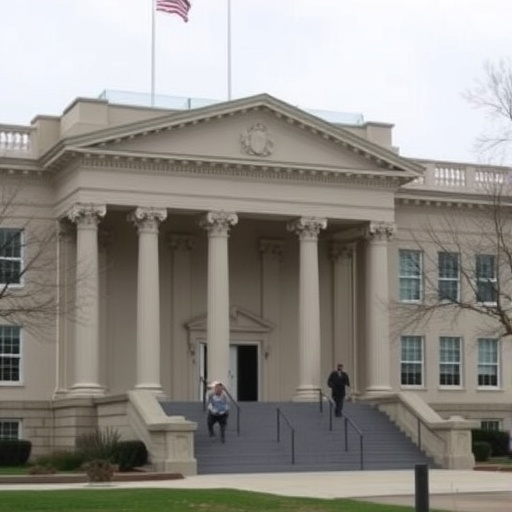Federal Employee Unemployment Claims Surge in Virginia Amid Policy Shifts and Workforce Reductions
In a stark indicator of the evolving federal landscape, Virginia has seen a 25% spike in unemployment claims from federal employees over the past quarter, as administration-driven policy changes ripple through the workforce. This uptick, reported by the Virginia Employment Commission (VEC), underscores the immediate human cost of broader governmental transformations, leaving thousands of government workers in limbo and straining the Virginia economy.
- Breaking Down the Numbers: A 25% Jump in Federal unemployment Filings
- Administration Policies Fueling the Federal Workforce Shake-Up
- Ripple Effects: How Federal Layoffs Are Straining Virginia’s Economy
- Personal Stories: Federal Workers Navigate Job Loss and Uncertainty
- Looking Ahead: Pathways to Recovery and Policy Reforms
The surge in Federal unemployment claims comes at a time when the current administration is implementing aggressive workforce optimizations, including hiring freezes, early retirement incentives, and departmental restructurings. For Virginia, home to major federal hubs like the Pentagon and numerous agencies in Northern Virginia, these changes are not abstract—they’re reshaping communities and livelihoods.
Breaking Down the Numbers: A 25% Jump in Federal unemployment Filings
According to the latest VEC data released this week, unemployment claims from federal employees in Virginia totaled over 8,500 in the third quarter of 2023, a sharp increase from the 6,800 filed in the same period last year. This rise in unemployment claims highlights a troubling trend: Federal unemployment is no longer an anomaly but a growing reality for government workers in the state.
The numbers paint a vivid picture. In Fairfax County alone, a hotspot for federal employment, claims rose by 32%, driven by layoffs at agencies like the Department of Defense. Arlington County reported a 28% increase, while Alexandria saw a 22% uptick. These figures are derived from VEC’s weekly reports, which categorize filers by occupation and employer type, revealing that over 60% of the new claims stem from federal sources.
Economists attribute this surge to a combination of factors. ‘The administration’s push for efficiency is translating into real job losses,’ said Dr. Elena Ramirez, a labor economist at George Mason University. ‘Federal employees, who once enjoyed relative job security, are now facing the same uncertainties as private sector workers.’ Ramirez’s analysis, based on Bureau of Labor Statistics data, shows that federal unemployment rates in Virginia have climbed to 4.2%, up from 2.1% a year ago.
This isn’t just about numbers; it’s about people. Consider the case of Mark Thompson, a 15-year veteran IT specialist at a federal agency in Reston. After a recent reorganization, his department was downsized, and he found himself filing for unemployment. ‘I never thought I’d be in this position,’ Thompson shared in an interview. ‘These policy shifts feel like they’re eroding the stability we built our lives around.’
Administration Policies Fueling the Federal Workforce Shake-Up
At the heart of the rising unemployment claims lies a series of administration initiatives aimed at streamlining government operations. The Workforce Efficiency Act, signed into law earlier this year, mandates a 10% reduction in non-essential federal positions across agencies. In Virginia, this has meant targeted cuts in administrative and support roles, affecting thousands of government workers.
Key policy shifts include the expansion of remote work mandates reversed in favor of in-office requirements, leading to relocations or resignations, and the consolidation of overlapping programs between departments like Homeland Security and Veterans Affairs. ‘These changes are necessary for fiscal responsibility,’ stated White House spokesperson Karen Ellis in a recent briefing. ‘But we recognize the transitional challenges for our dedicated federal employees.’
Yet, critics argue the pace is too rapid. The American Federation of Government Employees (AFGE) reports that over 15,000 Virginia-based federal workers have been impacted since January, with many opting for voluntary separations only to regret it amid a cooling job market. ‘Government workers are the backbone of our nation’s operations, and this upheaval is shortsighted,’ said AFGE Virginia Chapter President Tom Hargrove. His union has filed grievances on behalf of members, citing inadequate severance and retraining support.
Broader context reveals that these policies align with a national trend. The Office of Personnel Management (OPM) data indicates a 12% national increase in federal separations, but Virginia’s exposure is amplified by its concentration of federal jobs—over 300,000 positions, representing 8% of the state’s workforce. This makes the Virginia economy particularly vulnerable to fluctuations in federal employment.
Ripple Effects: How Federal Layoffs Are Straining Virginia’s Economy
The influx of unemployment claims from federal employees is sending shockwaves through the Virginia economy, where government workers contribute billions in spending power. Northern Virginia, often dubbed the ‘Silicon Valley of government contracting,’ relies heavily on federal dollars, with the sector accounting for 40% of the region’s GDP.
Local businesses are feeling the pinch. Retailers in areas like Tysons Corner report a 15% drop in sales from federal employee shoppers, while real estate markets in Arlington and Fairfax see rising inventory as families relocate or downsize. ‘When federal unemployment rises, it cascades,’ explained Sarah Jenkins, president of the Northern Virginia Chamber of Commerce. ‘These government workers are our customers, our neighbors, and their reduced spending hits everyone.’
Statistics from the Virginia Department of Labor and Industry bolster this view. Consumer spending in federal-heavy counties dipped 7% year-over-year, correlating directly with the uptick in unemployment claims. Moreover, the state’s overall unemployment rate has edged up to 3.8%, with projections from the Weldon Cooper Center for Public Service suggesting it could reach 4.5% by year’s end if federal trends persist.
Social services are also under pressure. Food banks in Richmond and Norfolk have seen a 20% increase in usage from former federal employees, many of whom are mid-career professionals unaccustomed to seeking aid. ‘We’re bridging a gap that’s widening faster than anticipated,’ said Lisa Chen, director of the Virginia Food Assistance Network. Her organization has partnered with VEC to fast-track benefits for federal unemployment filers, processing over 2,000 applications in the last month alone.
On a positive note, some sectors are adapting. Tech firms in the Dulles Corridor are hiring displaced government workers for cybersecurity roles, leveraging their security clearances. However, the transition isn’t seamless; a survey by the Virginia Tech Center for Survey Research found that 45% of affected federal employees report skill gaps in private-sector demands like agile project management.
Personal Stories: Federal Workers Navigate Job Loss and Uncertainty
Behind the statistics are individual narratives of resilience and frustration. In Springfield, Virginia, Lisa Morales, a former administrative officer at the Environmental Protection Agency, was let go in a June restructuring. Now filing unemployment claims, she’s tapping into savings while job hunting. ‘I loved serving the public, but these administration changes made me expendable,’ Morales said. ‘The Virginia economy feels the weight, but so do our families.’
Similarly, veteran government worker Jamal Reed from Chesapeake faced early retirement pressure from the Navy’s personnel overhaul. ‘After 22 years, I’m starting over,’ Reed recounted. His story is echoed in support groups forming across the state, where federal employees share tips on resume building and networking.
Quotes from community leaders add depth. Governor Glenn Youngkin addressed the issue in a recent press conference: ‘We stand ready to support our federal workforce through retraining programs funded by the Virginia Works initiative. The rise in unemployment claims is a call to action for economic diversification.’ Youngkin’s administration has allocated $50 million for workforce development, targeting government workers transitioning to private industry.
Experts like Dr. Ramirez emphasize mental health impacts: ‘Job loss in stable careers like federal employment can lead to prolonged stress. Virginia’s resources, from counseling at community colleges to OPM’s transition services, are crucial now.’ Indeed, usage of Virginia’s Employee Assistance Program has surged 35% among federal filers.
Looking Ahead: Pathways to Recovery and Policy Reforms
As the dust settles on these administration changes, the path forward for Virginia’s federal employees and the broader economy hinges on adaptive strategies. Policymakers are eyeing reforms, including extensions to unemployment benefits tailored for federal workers—potentially adding 13 weeks to standard claims—and incentives for agencies to retain talent through hybrid work models.
The VEC anticipates a stabilization in unemployment claims by mid-2024 if hiring resumes, but warns of prolonged effects if budget cuts deepen. Nationally, congressional hearings on federal workforce impacts are scheduled for next month, with Virginia representatives pushing for moratoriums on further reductions.
For individuals, opportunities abound in growing sectors like renewable energy and data analytics, where federal experience is prized. Programs like the federal government’s own Priority Placement Program aim to reabsorb workers internally, though success rates hover at 60%.
Ultimately, the surge in federal unemployment claims serves as a barometer for Virginia’s resilience. With proactive measures—from state-funded upskilling to federal policy tweaks—the state can mitigate the fallout, turning challenge into catalyst for a more diversified economy. As one affected worker put it, ‘We’re not done serving; we’re just redirecting our service.’ This forward momentum will define the next chapter for government workers and the Virginia economy alike.








